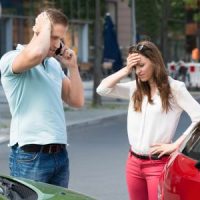Direct and Supplemental Evidence in a Car Crash Claim

Cold, hard facts usually make a difference in life. That’s certainly true for victims in personal injury cases. To obtain compensation for their injuries, victims must prove negligence, or a lack of care, by a preponderance of the evidence, or more likely than not. While technically the standard of proof is low, there’s usually a direct relationship between the amount of evidence a victim presents and the amount of compensation a jury awards. Therefore, the evidence must be strong in all three areas discussed below.
In most cases, car crashes aren’t “accidents.” Driver error causes more than 98 percent of the vehicle collisions in Texas. Only a Sugar Land car accident lawyer holds tortfeasors (negligent drivers) responsible for the mistakes they make. You break it, you buy it. If Sam unintentionally dings his neighbor’s car door, he (or his insurance company) must pay compensation. The same principle applies if Sam causes a high-speed collision.
Medical Bills
Usually, medical expenses are the largest component of damages in a personal injury case. The average injury-related medical bill is more than $40,000.
Treatment records establish essential information, mostly diagnosis, treatment, and cost information. Privacy laws sometimes make these records difficult to obtain, but a Missouri City personal injury lawyer usually just needs to make a phone call.
Diagnosis, cost, and treatment data is a good start. But in Texas, victims must prove that services rendered were reasonably necessary. Furthermore, cold, clinical medical bills often don’t include treatment notes that establish the victim’s mood and pain level at various stages. Finally, prior medical records usually don’t indicate the need for necessary future medical treatment.
Attorneys usually partner with independent doctors who fill in these gaps, so maximum compensation is assured.
Eyewitness Testimony
Medical records are cold and clinical, and eyewitness testimony is emotional. Something almost mystical occurs when disinterested witnesses swear to tell the truth and tell jurors what they saw and heard.
Eyewitnesses are often hard to come by, especially in freeway collision claims. Most people don’t stop what they’re doing, loiter at accident scenes, and give official statements to police officers.
Electronic evidence, such as a vehicle’s Event Data Recorder, effectively supplements eyewitness evidence. Depending on the make and model, the EDR usually captures and records data like:
- Steering angle,
- Brake application,
- Vehicle speed, and
- Engine RPM.
In many cases, computer evidence has an emotional effect as well. Such evidence usually garners outsized weight among tech-savvy Fort Bend County jurors.
Police Accident Report
In effect, the police accident report combines eyewitness testimony and medical records. It has an emotional effect and conveys solid facts.
However, the police accident report is often incomplete or inaccurate. Emergency responders only use evidence immediately available at the scene to prepare these reports, at least in most cases. So, important evidence like EDR evidence, doesn’t factor in. Furthermore, if the victim died in the crash, the reporting officer only heard one side of the story.
Accident reconstruction professionals are critical in these situations. They consider all the facts, not just some of them, and render an unbiased, expert opinion based solely on those facts.
Work With a Detail Oriented Fort Bend County Attorney
Injury victims are entitled to significant compensation. For a confidential consultation with an experienced personal injury attorney in Missouri City, contact the Henrietta Ezeoke Law Firm. The sooner you reach out to us, the sooner we start working for you.
Source:
law.cornell.edu/wex/preponderance_of_the_evidence
